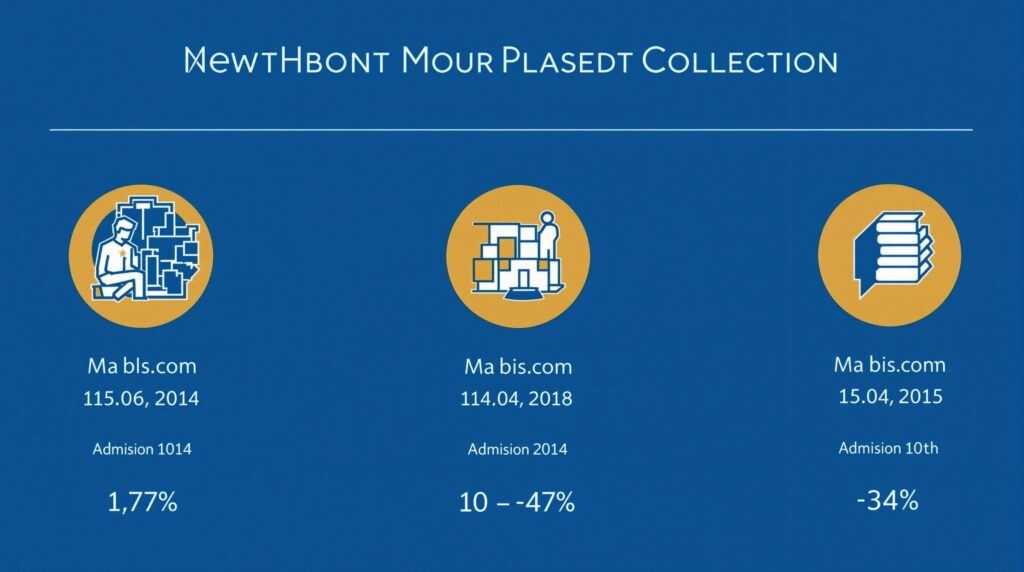Navigating the maze of educational funding options can be confusing when planning your career path. Is there any difference between grant and aid? Yes—grants are specific types of financial assistance that don’t require repayment, while financial aid is a broader term encompassing grants, scholarships, loans, and work-study programs that help students fund their education.
Key Takeaways
- Grants are gift money that never need to be repaid, while financial aid includes both free money and loans requiring repayment
- The FAFSA application is the primary gateway to accessing most grants and federal financial aid options
- Pell Grants provide up to $7,350 per year to eligible undergraduate students with financial need
- Understanding the differences between funding sources helps you create a strategic financial plan for your education
- Some grants and scholarships come with service commitments that directly impact your career path after graduation
Understanding the Fundamentals: Grants vs. Financial Aid
When exploring your educational funding options, it’s essential to understand the key differences between grants and financial aid. Grants are specifically need-based funding that doesn’t require repayment. The most common example is the Federal Pell Grant, which averages $4,491 per recipient. On the other hand, financial aid serves as an umbrella term covering multiple funding types, including grants, scholarships, loans, and work-study programs.
The scope of financial aid is substantial. In the 2023-24 academic year alone, federal aid programs disbursed $114.9 billion to help over 10 million students pursue their education. However, not all financial aid is free money—a significant portion comes in the form of loans. In fact, 75.9% of 2024’s $47.96 billion debt increase came from federal loans that students will eventually need to repay.
Understanding these differences is crucial when planning how to fund your educational program or project. While grants provide financial support without future obligations, loans will impact your finances long after graduation.

Federal, State, and Institutional Grants: Your Free Money Options
When it comes to grants, several types of free educational funding exist at federal, state, and institutional levels. The Federal Pell Grant stands as the cornerstone of need-based aid, offering a maximum award of $7,350 and benefiting approximately 7.5 million students annually. According to Education Data Initiative, 51% of Pell Grant funding goes to families earning under $20,000 per year.
Beyond Pell Grants, the TEACH (Teacher Education Assistance for College and Higher Education) Grant provides up to $4,000 annually to students pursuing teaching careers in high-need fields. However, these grants come with specific service requirements—recipients must teach in designated schools for at least four years after graduation.
The Federal Supplemental Educational Opportunity Grant (FSEOG) offers additional support for students with extreme financial need, with awards averaging $1,107. Geographic disparities exist in grant distribution—New York students receive an average Pell Grant of $4,802, while Alaska students average only $3,996.
State-specific grants further supplement federal options. For example, Minnesota State Grant recipients received an average of $5,692 in 2024. Institutional distribution shows interesting patterns, with 88% of Pell Grant funds going to public universities and 13% to private nonprofit institutions.
Beyond Grants: Scholarships, Loans, and Work-Study Programs
While grants provide essential funding, they represent just one component of the financial aid landscape. Scholarships differ from grants primarily because they’re typically merit-based rather than need-based. According to Kutest Kids research, 97% of scholarships award less than $2,500, and only 0.1% cover full tuition costs. Although 58% of families use scholarships, only 7% of students successfully secure them.
Loans constitute a significant portion of financial aid packages. Federal Stafford Loans come in two varieties:
- Subsidized loans: Interest doesn’t accrue while you’re in school
- Unsubsidized loans: Interest accrues immediately, currently at 6.54%
Private loans represent another financing option, with $138.5 billion in outstanding balances and an average of $14,565 per borrower. These typically carry higher interest rates and less flexible repayment terms than federal options.
Work-study programs offer a way to earn while learning. Participants can earn up to $25 per hour, with average annual earnings reaching $20,250 at institutions like Berkeley College. These programs provide valuable work experience while helping offset educational costs.
I recommend exploring national foundations offering educational grants to supplement your funding options.
Key Differences in Eligibility and Application Processes
Understanding eligibility requirements is crucial for securing appropriate funding. Grants typically require demonstrated financial need—for example, Pell Grants primarily target households earning under $40,000 annually. In contrast, broader financial aid includes non-need-based options like unsubsidized loans, which are available regardless of financial situation.
The application process varies by funding type. Most federal and state grants require completing the Free Application for Federal Student Aid (FAFSA). This single application opens doors to multiple funding sources—in the 2022-23 academic year, 85.2% of FAFSA applicants received some form of aid. Overall, 17.045 million students submitted FAFSA applications during this period.
Scholarships often demand additional effort, including separate applications, essays, or interviews. This more involved process partially explains why fewer students successfully secure scholarships despite their widespread availability.
The timing of applications also matters significantly. For maximum funding consideration, submit your FAFSA as early as possible—the form becomes available on October 1 for the following academic year. Many aid programs operate on a first-come, first-served basis until funds are depleted.
Repayment Considerations: What You’ll Owe After Graduation
One of the most important differences between grants and other financial aid forms lies in repayment obligations. Grants represent free money with no repayment requirements, provided you meet any associated service commitments or maintain satisfactory academic progress.
In contrast, loans create future financial obligations. The average student debt upon graduation currently stands at $29,900. The source of your loans significantly impacts repayment terms—federal loans offer more flexible options than private alternatives. Federal loans, which account for 92.8% of all student debt, provide income-driven repayment plans that adjust monthly payments based on your earnings.
Federal debt relief programs have made meaningful impact, reducing overall balances by $34.9 billion in 2023. These programs include Public Service Loan Forgiveness (PSLF) for those working in government or nonprofit sectors and income-driven forgiveness after 20-25 years of consistent payments.
When planning your education funding strategy, I recommend calculating your projected debt-to-income ratio after graduation. This figure—your total monthly debt payments divided by your monthly income—helps determine whether your expected career earnings will reasonably support your loan repayment obligations.
2024-2025 Funding Trends: What’s Changing in Educational Finance
The educational funding landscape continues to evolve, with several notable trends emerging for 2024-2025. The Pell Grant program has experienced significant expansion, with a 12.6% increase in recipients due to updated federal aid formulas. These changes have expanded eligibility, particularly for middle-income families.
State funding initiatives are also gaining momentum. Minnesota’s combined aid packages now reach $7,640 for low-income students, representing substantial state investment in education access. Meanwhile, federal loan disbursements are projected to reach $93.1 billion in 2025, reflecting ongoing reliance on borrowed funds despite grant expansion.
Student loan policy reforms continue to reshape repayment options. Recent changes include the SAVE (Saving on a Valuable Education) plan, which caps payments at 5% of discretionary income for undergraduate loans and offers forgiveness after shorter timeframes than previous plans.
For prospective students, these trends underscore the importance of regularly reviewing available funding options. Programs and eligibility criteria change frequently, potentially opening new opportunities that weren’t previously accessible.
How Your Funding Choice Impacts Your Career Path
The funding options you select can have long-lasting career implications. Some grants and scholarships come with specific service commitments—for instance, TEACH Grant recipients must work in education for four years after graduation. Similarly, healthcare and STEM scholarships often include requirements to work in underserved areas or specific industries.
Your debt load also influences career flexibility. Social work graduates earn an average of $48,402 but often face higher debt burdens relative to their income. This financial pressure can limit options for pursuing lower-paying but personally rewarding career paths.
Work-study participation in career-relevant fields provides dual benefits: reducing immediate education costs while enhancing job prospects through relevant experience. The connections and skills developed during these programs often prove as valuable as the financial support.
Understanding these dynamics helps in making strategic funding decisions aligned with your career aspirations. For example, if you’re pursuing academia, it’s worth noting that only 31% of PhD social work graduates secure tenure-track positions, making careful financial planning especially important.
Creating a successful grant proposal can be an excellent way to secure additional funding with fewer strings attached.
Maximizing Your Educational Funding: Strategic Application Tips
To optimize your educational funding, start by applying early. FAFSA statistics show that 74.2% of 2022-23 applicants were returning students who understood the importance of securing priority consideration. Early applications often access larger fund pools before they’re depleted.
Diversifying your funding sources creates a more stable financial foundation. Approximately 60% of families use scholarships alongside grants to minimize loans. Consider these practical strategies for maximizing your educational funding:
- Target niche scholarships with less competition, such as those for specific majors or demographics
- Research field-specific funding options like Minnesota’s average grant of $7,640 for low-income students
- Balance your funding portfolio between free money (grants/scholarships) and loans
- Consider your projected earnings when determining acceptable debt levels
- Explore institutional aid at your specific school, which may not appear in general searches
Remember that smaller awards add up—don’t dismiss opportunities because they won’t cover full tuition. Even modest scholarships for books or supplies reduce your overall education costs and potential debt burden.
By taking a strategic approach to educational funding, you’ll create a financial plan that supports both your immediate educational needs and long-term career goals.



